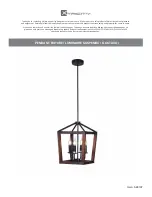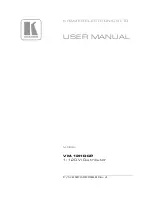
2-6
TRAVEL:
1. For Pick and Carry operation: Traveling with suspended loads involves so many
variables, such as ground conditions, boom length, and vehicle acceleration, that
it is impossible to devise a single standard rating procedure with any assurance of
safety. For such operations, the user must evaluate prevailing conditions and
determine safe practices using precautions, such as the following:
A. The boom shall be centered over front axle.
B. Use shortest boom practical.
C. Carry load as close to ground as practical.
D. Reduce travel speed to suit conditions [3 mph (4.8 km/h) (maximum)].
E. Maintain specified tire pressures.
F. Avoid sudden starts and stops.
G. Provide tag or restraint lines to snub swinging of the load.
H. Hand-held tag lines should be nonconductive.
I. Do not carry heavy boom loads and deck loads at the same time.
J. Do not pick and carry with jib installed.
K. Do not exceed the OVER FRONT, ON RUBBER capacity.
2. When raising the boom or moving the unit with boom elevated, be sure there is
adequate overhead clearance for boom.
3. For carrying loads on decks:
A. Boom must be retracted, centered, and lowered as close as possible.
B. 3 mph (4.8 km/h) maximum road speed. Reduce speed below 3 mph (4.8
km/h) to properly match condition of road surface and deck load.
C. Remove load hook from load before traveling.
4. Cranes with rear steering require close watch because of "tail swing" when the
chassis is turned in tight quarters.
5.
6. Every effort has been made to make the BMC Industrial Crane a stable vehicle.
However, with the center of gravity higher than some vehicles, the rigid rear axle
and the unsprung oscillating front axle suspension, the operator must take care to
control the vehicle speed on rough roads, uneven terrain or slopes.
7. When this crane is to be parked on a grade, set parking brake and block wheels
or extend outriggers fully.
8. Shut off engine before refueling, and remove fuel cap slowly. Vapor pressure in
tank can cause a burst of fuel and vapor when the cap is removed.
Summary of Contents for IC-20-1K
Page 6: ...1 2 DIMENSIONS AND ORIENTATION IC 20 1K...
Page 7: ...1 3 TURNING DIMENSIONS...
Page 25: ...2 11...
Page 26: ...2 12...
Page 36: ......
Page 45: ...3 9 IC 20 LUBRICATION CHART...
Page 49: ...3 13 JIC SCHEMATIC...
Page 51: ...3 15 STEERING SYSTEM...
Page 53: ...3 17 IC 20 PROPULSION SYSTEM...
Page 63: ......
Page 64: ......
Page 65: ......
















































